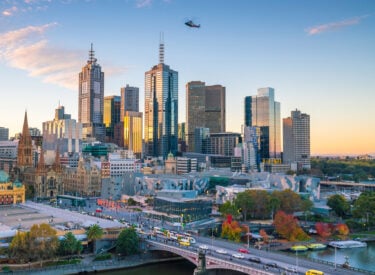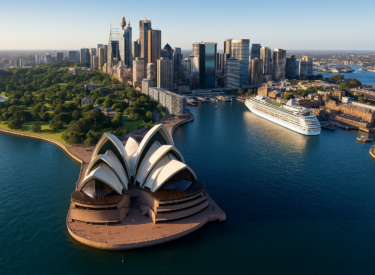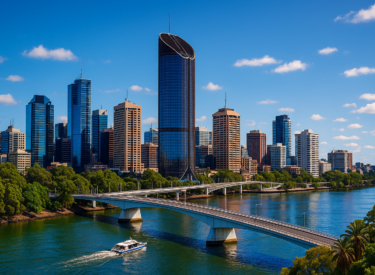
Key takeaways
The widespread belief that manufacturing has died in Australia is misleading.
Yes, car brands like Holden, Ford, and Toyota left—but manufacturing itself didn’t disappear.
Instead, it has adapted to global trends and shifted toward more specialised, high-value sectors.
For a long time, the popular narrative has been that manufacturing in Australia is dead.
We’ve all heard the stories: Holden shut its doors, Ford and Toyota packed up and left, and what was once the proud engine of our economy seemed to stall.
Even I’ll admit, I believed that story.
But the reality, as demographer Simon Kuestenmacher and I recently discussed in our latest episode of the Demographics Decoded podcast, is far more nuanced and, frankly, surprising.
Manufacturing in Australia hasn’t died.
It’s adapted.
It’s evolving.
And for those who pay attention, it presents one of the most overlooked opportunities for strategic investment and policy innovation.
For weekly insights and strategic advice, subscribe to the Demographics Decoded podcast, where we will continue to explore these trends and their implications in greater detail.
Subscribe now on your favourite Podcast player:
A sector in transition, not in decline
Yes, it’s true that fewer Australians work in manufacturing today than in the 1970s and 1980s when the industry was booming.
Back then, manufacturing was the backbone of our economy, powered by migrants working in clothing and footwear factories, and Aussies building cars, furniture, and appliances.
But here’s the key detail: there are still around 900,000 Australians employed in manufacturing.
That’s only slightly down from the all-time peak of 1.1 million.
The reason it feels like a steep decline is that Australia’s overall workforce has grown dramatically.
As a share of total employment, manufacturing looks smaller.
But in real numbers, it’s still a vital contributor.
Much of what has changed is the nature of the jobs, not their disappearance.
In fact, many roles that used to fall under “manufacturing” have simply been reclassified.
A forklift driver in the 1980s worked directly for a factory.
Today, that same worker is probably employed by a logistics firm, moving parts under a just-in-time delivery model.
So what we’re really seeing is not death, but a statistical and structural shift that reflects the growing complexity of global supply chains.
From blue-collar to high-tech: today’s factory worker looks very different
Simon rightly pointed out that the typical manufacturing worker today is far more skilled than their counterparts from previous decades.
Factories are now high-tech environments.
Workers need to operate automated machinery, understand software-driven inventory systems, and keep up with constant technological upgrades.
These are not low-skilled roles—they require vocational education, on-the-job training, and adaptability.
And the pay reflects that shift.
While higher wages haven’t always kept pace with the cost of living, today’s manufacturing roles are better compensated than in the past.
This new generation of factory jobs aligns more closely with the knowledge economy than the assembly-line model of old.
But here’s the irony: even as the jobs have become more advanced, the cultural narrative hasn’t caught up.
We still view manufacturing through an outdated lens.
Young Australians are told to pursue passion and creativity, and are rarely encouraged to see the technical brilliance involved in modern production roles.
That perception problem needs correcting, because a skilled, tech-savvy manufacturing sector is essential for Australia’s long-term economic resilience.
Why tariffs and nostalgia don’t work
There’s a global trend toward “reshoring” manufacturing.
Donald Trump in the US has been pushing to bring industry back within national borders.
But as Simon pointed out, that’s often more about politics than practicality.
High-wage countries simply can’t—and shouldn’t—try to compete on low-margin products like clothing or toys.
Take baby strollers, for example: over 90% of those used in the US are made in China.
Rebuilding that supply chain locally would be inefficient and cost-prohibitive.
So when we talk about reviving Australian manufacturing, we must focus on areas where we can genuinely add value.
That means sectors where:
- Sovereign capability matters (like defence and pharmaceuticals)
- We can integrate with global supply chains (like mining or food processing)
- Automation and smart systems can replace volume-based production
Tariffs might protect some local jobs temporarily, but they don’t make us more competitive.
Instead, we need policies that support strategic innovation, not nostalgia.
Energy: the game-changer we’re not talking about enough
Here’s the elephant in the room: energy costs in Australia are way too high.
Despite our status as one of the world’s largest energy exporters, our domestic industries are shackled by electricity prices that make many types of manufacturing economically unviable.
This is the number one lever the government can pull.
Not tax breaks.
Not cheap land.
Not subsidies.
If we want more manufacturing in Australia, we must make energy cheaper.
And not through rebates—Simon made this point forcefully.
Rebates just shift the burden from one pocket to another.
What we need is a genuine reduction in the cost of energy production and distribution, supported by a clear, forward-thinking national energy strategy.
This is especially true if we’re serious about sustainability.
If Australia wants to claim green credentials and shorten supply chains for environmental benefits, then clean, affordable, renewable energy is not optional—it’s essential.

Strategic niches where Australia can win
So, where should we focus our manufacturing efforts?
Not everything, of course—but we can win in key areas:
- Value-Added Exports
Instead of exporting wheat, let’s export breakfast cereals.
Instead of iron ore, let’s export steel or aluminium.
This makes better use of our natural resources and creates more domestic jobs per ton of product.
- Pharmaceuticals & Medical Equipment
The pandemic exposed our vulnerabilities in this space.
Having a local capacity to produce essential medical supplies, even at a modest scale, is a matter of national security.
- Defence Manufacturing
Australia still builds vehicles, but they’re Bushmasters and submarines, not Commodores.
National defence is one area where in-country production trumps cost-efficiency.
- Biotech & Advanced Manufacturing
These “footloose” industries, those that can set up shop anywhere with the right talent, are ideal for Sydney, Melbourne, and Brisbane.
With strong university networks and skilled labour, we’re well-positioned to attract high-value firms.
What about Regional Australia?
Here's a bold idea: let’s decentralise.
Australia’s population has grown enormously, yet we still live in the same five major cities we did 100 years ago.
Regional development offers a huge opportunity, and manufacturing could lead the way.
Imagine a high-tech factory for prefab housing in a regional centre.
These facilities could churn out modular, energy-efficient homes at scale, with far less material wastage and weather delays.
Combine that with local job creation and lower living costs, and you have the foundation for a vibrant new city.
But this won’t happen without major capital investment.
Simon suggests that super funds and the government work together to underwrite these initiatives.
The payoff?
More homes, more jobs, and a more balanced urban footprint for Australia.
The role of government: enable, don’t control
The government doesn’t need to pick winners.
But it must set the stage for success.
That means:
- Cheaper, more reliable energy (priority #1)
- Free or subsidised TAFE training to build a skilled workforce
- Clear regulation that supports innovation and competition
And above all, avoid short-term political fixes.
Instead, focus on long-term strategies that create real economic productivity and resilience.

Final thoughts: manufacturing still matters
Australian manufacturing hasn’t vanished.
It’s just matured.
The factories of today are cleaner, smarter, and more efficient.
The jobs are better paid and more skilled.
And the opportunities—especially in high-tech, strategic industries—are just beginning to open up.
But we must act now.
If we want a manufacturing sector that supports our economy, our security, and our sovereignty, we need to build the foundations today, starting with energy, skills, and strategic thinking.
It’s not about reviving the past.
It’s about creating a new future—one that reflects Australia’s strengths and our place in a rapidly changing world.
If you found this discussion helpful, don't forget to subscribe to our podcast and share it with others who might benefit.
Subscribe now on your favourite Podcast player:














